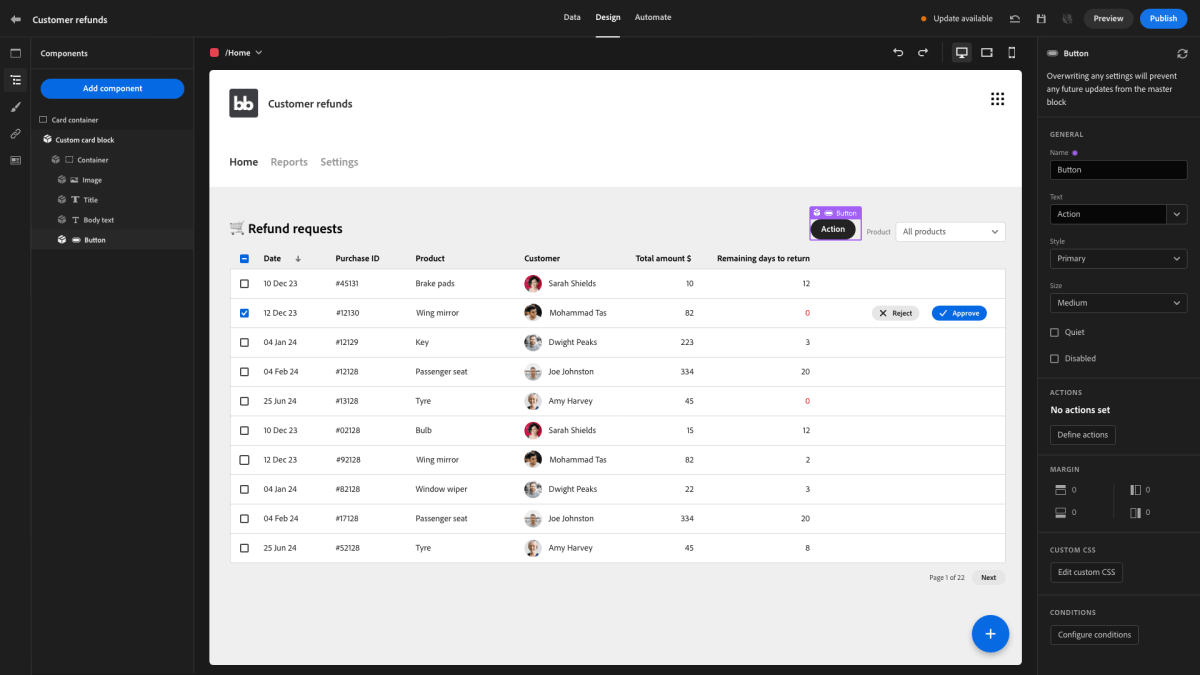Retool launches Workflows to go beyond the front end • ZebethMedia
Since its launch in 2017, Retool has made a name for itself by offering developers an easier way to build line-of-business apps for their internal users. Unlike the many low-code/no-code tools on the market today, Retool’s focus remains squarely on developers, despite its helpful drag-and-drop interface. Now, about half a year after announcing its $45 million funding round, the company is expanding its feature set by adding new tools for building backend workflows, too. Retool Workflows, as the company named this new feature, makes it easy for developers to create automated processes like cron jobs, custom alerts and standard extract, transform, load (ETL) tasks, using a similar graphical interface as the frontend tool, all while adding a lot more flexibility than tools like Zapier. “Some people try to put us in the no code-space or something. You’ll never hear us ever saying that,” Retool CEO and co-founder David Hsu told me. “The reason for that is we actually don’t believe in it really. I think if you look at tools like for example Airtable or Zapier or stuff like that, we think that’s really great if you have a simple use case or a medium-sized use case — it’s great for that. But if you want to build a really advanced use case, like an internal tool that an Amazon might build, for example, then Zapier will be able to get you 50% there very quickly, but the remaining 50% basically becomes impossible.” Image Credits: Retool Instead of going for a no-code approach, the Retool team always built its service for developers first. “We believe in the power of code,” said Hsu. He also noted that the trend he sees is that more and more people now learn how to code and that this is the trend he wants to bet on — not dumbing down the coding experience. Workflows fits right in here, he argues, because it’s very hard to build a low-code/no-code tool that allows you to build complex workflows without quickly hitting the limitations of what these tools can do without resorting to writing custom code (though we’ve seen quite a few companies try). Hsu noted that a lot of customers were already hacking the Retool app to make some of these capabilities work for them. But instead of firing off a cron job, they would write a script that would automatically click a button in a custom app at a certain time to kick off a workflow, for example (which is apparently what one of Retool’s customers did). “Developers need the flexibility of code. They want a toolset that speeds up work withoutnarrowing their options,” said Jamie Cuffe, Product Lead, Retool. “Retool Workflows aims to abstract away the tedious parts of building automations from scratch while preserving the ability to write code to solve the problem.” The Retool team argues that building regular cron jobs, with their arcane format, is both time consuming and error prone — and the final result is hard to maintain and debug. “I really think there is no developer-focused workflows product that I’m aware of. That is why we’re launching this,” said Hsu. In addition to running scripts at regular intervals, Retool Workflows can also use webhooks for a more event-driven approach. That means it could be used for alerting, in addition to more traditional lightweight ETL applications. Indeed, Hsu said that most users in the Workflows beta got started with alerting and notifications and then transitioned to ETL use cases over time. It’s worth noting that this isn’t so much an enterprise integration tool for moving data between applications but still squarely focused on getting this data into Retool-based line-of-business applications. “We needed an efficient way to translate product data in our warehouse into timely, insightfulreporting in Slack,” said Joel McLean, director of product growth at RE/MAX. “With Retool Workflows, my team can easily configure our resources in one place and focus only on writing the logic unique to our business.” The new service will be priced based on data throughput. Each Retool plan, including the free one, will come with 1GB of Workflows data for free, with overages starting at $50/GB. For now, Workflows is only available as a hosted service, but the team is already working on an on-prem version. That’s how many of Retool’s customers are already using its app building tool, including the likes of Stripe, Brex, Coinbase and Plaid, so it only makes sense for the company to do the same for Workflows.

